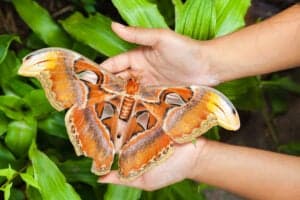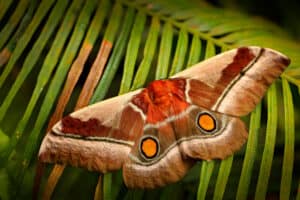Hawaii is likely best known for its breathtaking beaches and welcoming culture. However, the wildlife present there is some of the most interesting and diverse this world has to offer. Insects are no exception, and Hawaiian moths in particular are some of the most beautiful in the country. Whether you’re a Hawaii native or just curious about what kind of moths you can expect to see on your trip, we’ve got you covered. Here are five of the most common moth species in Hawaii.
1. Sphinx Moth
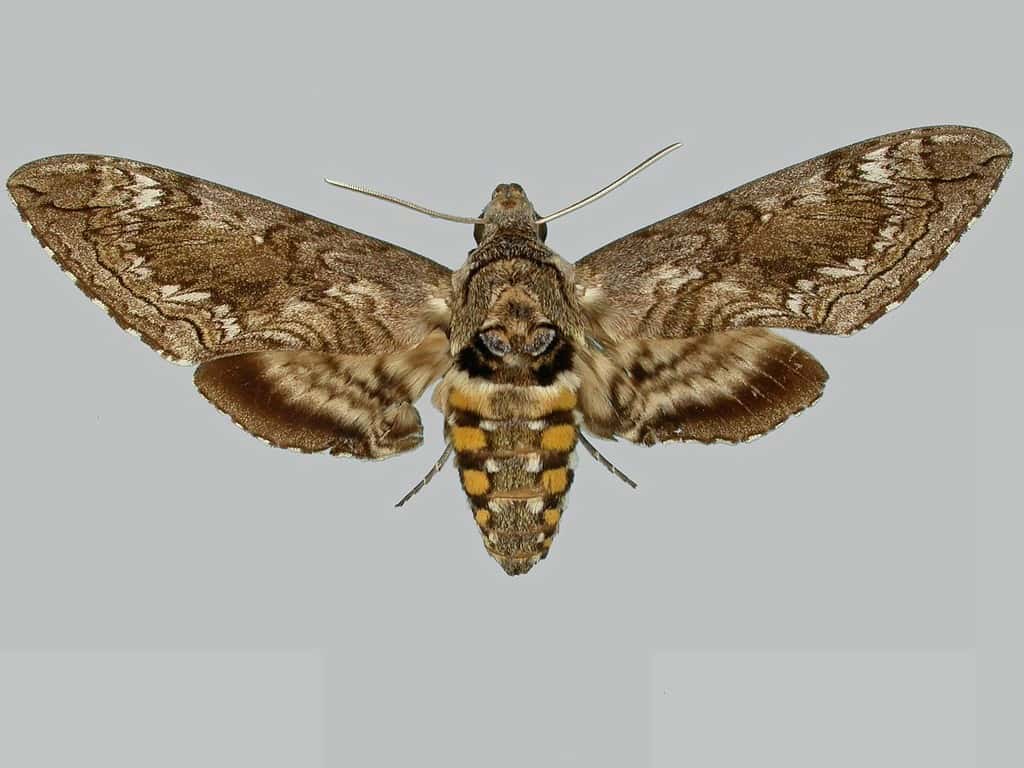
Blackburn’s sphinx moth is also sometimes called the Hawaiian tomato hornworm.
©The Trustees of the Natural History Museum, London / CC BY 3.0 – Original / License
“Sphinx moth” is a blanket term that covers several species. Also sometimes referred to as hawk moths, sphinx moths are characterized by their long, thin wings and large bodies. The Achemon sphinx moth, oleander hawk moth, yam hawk moth, and blinded sphinx moth are three that are common throughout the state of Hawaii. In addition, Hawaii is also home to Blackburn’s sphinx moth. Although they may not be as common as they used to be, this species is one of the largest insects native to Hawaii and has a wingspan of roughly 5 inches. At some point, experts believed this species to be extinct due to incredibly low spotting. According to Hawaii’s Department of Land and Natural Resources, “Current threats include non-native ants, especially the big-headed ant (Linepithema humile) and several species of parasitic flies and wasps. All species of host plants in the genus Nothocestrum are declining.”
2. Koa Moth
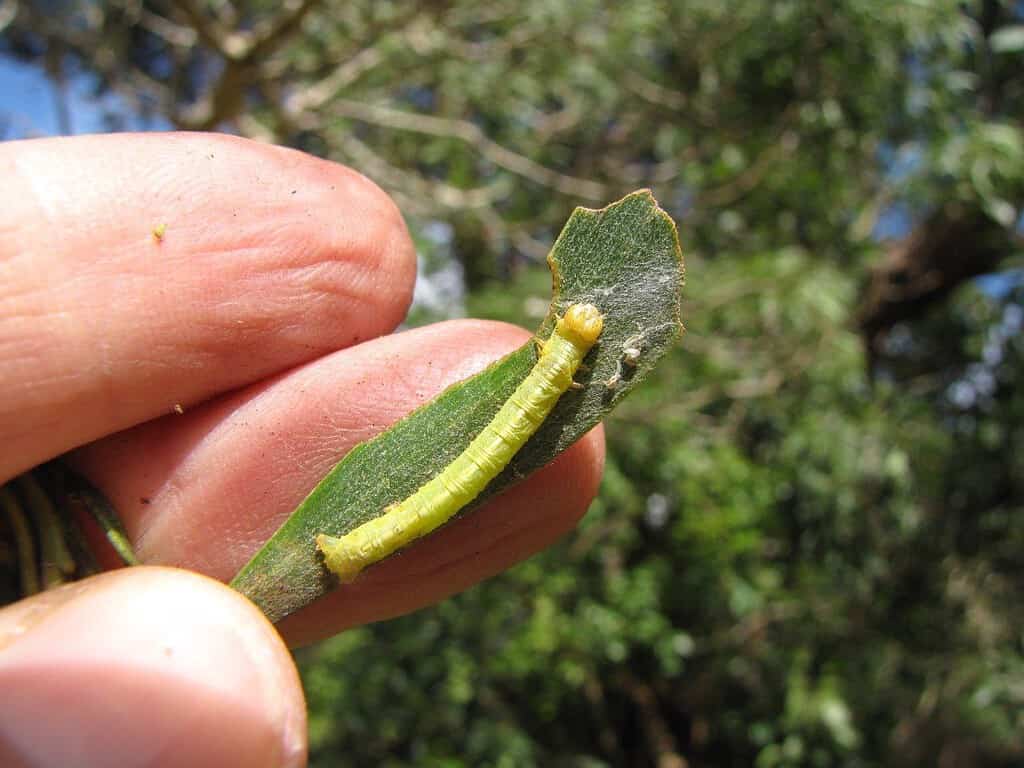
Although koa moth caterpillars may look small and unassuming, they are capable of great destruction.
©Forest Starr and Kim Starr / CC BY 2.0 – Original / License
Unlike other moth species that are commonly found in Hawaii, the koa moth is endemic to the state. This means that this species does not occur anywhere else in the world. The larvae feed on the leaves of koa trees, and it is natural for these moths to emerge in great numbers. According to the United States Geological Survey, “The massive 2013−2014 outbreak of the koa moth (Scotorythra paludicola) defoliated more than a third of the koa (Acacia koa) forest on Hawai‘i Island during 2013−2014. This was the largest koa moth outbreak ever recorded and the first on the island since 1953. The outbreak spread to sites distributed widely around the island between 800−2,000 m elevation and in wet rainforest to dry woodland habitats.”
3. Cecropia Moth

The lifespan of an adult cecropia moth is roughly two weeks long.
©Cathy Keifer/Shutterstock.com
Although the Cercropia moth might be gigantic, they are elusive. Like most moths, they are nocturnal, meaning their hours of peak activity occur during the time we typically sleep. In addition to this, they only live for a short period of time as adults. Upon emergence, Cecropia moths are born without mouths. Since they aren’t motivated by food, they are more inclined to focus on reproduction. Mating season can be a frenzy, with Cecropia moths from all across Hawaii diligently seeking a partner. During this time, Cecropia moths are abundant, and spotting one is relatively easy.
4. Ramie Moth
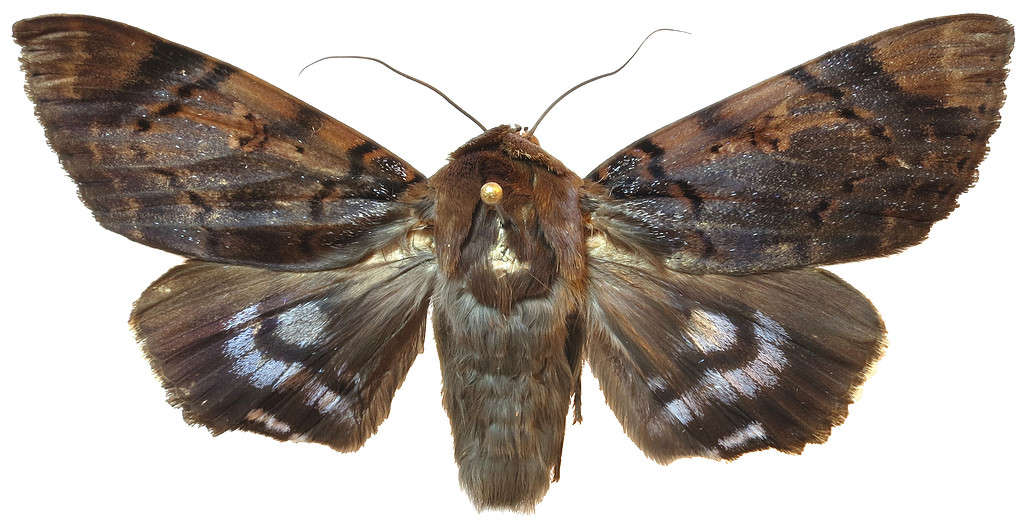
The ramie moth has only been documented on two Hawaiian Islands so far: Maui and Hawai’i.
The ramie moth might be a common sight, but it certainly isn’t a welcome one. This species is non-native to Hawaii and originates from the Philippines. Since it arrived in Hawaii, it has been responsible for contributing to the destruction of its host plant species, Māmaki (Pipturus albidus) and ma’aloa (Neraudia melastomaefolia). According to the Hawaii Invasive Species Council, ma’aloa is exceeding rare and “on the verge of extinction.” In addition, Māmaki is the host plant of the Hawaiian state butterfly, the Kamehameha butterfly. It appears that the population of the Kamehameha butterfly is in decline because of the presence of the ramie moth.
5. Black Witch Moth

Male black witch moths are typically smaller than their female counterparts.
©Vinicius R. Souza/Shutterstock.com
Unlike some of the other moth species we’ve discussed today, the population of black witch moths seems to be on the incline in Hawaii. Some people compare the black witch to a bat since it’s large in size and dark in color. Their wingspan is typically between five and seven inches, depending on their gender.
This species isn’t native to Hawaii; strong winds are likely to have carried them there and helped them spread throughout the islands. Since then, this species has become the subject of superstition. While other cultures sometimes look at this species as a harbinger of death and misfortune, Hawaiians have a more positive perspective. Natives believe a black witch moth is a signal that a lost loved one has visited. In general, they are seen as a symbol of prosperity and fortune. Luckily, spotting one seems to grow easier with each passing year!
| Moth | Abundance |
|---|---|
| Sphinx moth | Very common, found all over the state of Hawaii |
| Koa moth | Common during large group emergence |
| Cecropia moth | Common during their mating season |
| Ramie moth | Common on Maui and Hawai’i Island |
| Black witch moth | Common, found all over the state of Hawaii |
The photo featured at the top of this post is © The Trustees of the Natural History Museum, London / CC BY 3.0 – License / Original
Thank you for reading! Have some feedback for us? Contact the AZ Animals editorial team.





